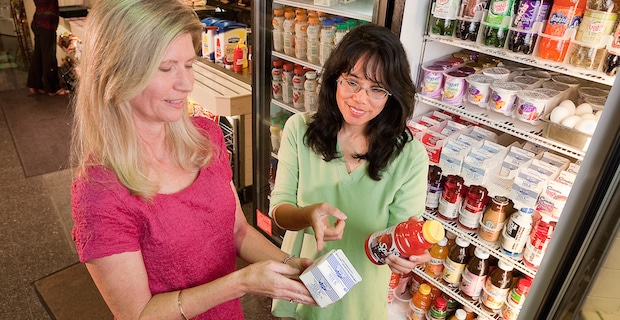
The term natural found on food labels tends to make concerned consumers feel a little more at ease compared to artificial flavors. But over the years we’ve learned that natural food labels mean little because unlike organic labels, they’re not mandated by the USDA. According to a new Environmental Working Group report, the same is true for natural flavors versus artificial flavors.
Natural flavors aren’t that much healthier than artificial flavors. Natural flavors must be derived from plant and animal sources but they can still contain synthetic chemicals as well as GMOs. Artificial flavors must be derived from 700 FDA-allowed flavoring chemicals, though EWG contends that the food additive review system is not strict enough.
Read more about scary additives in food
What’s more, their chemical makeup can actually be more complicated and use more ingredients than artificial flavor combinations. Today, natural flavors are the fourth most used ingredient, according to EWG, making their way into 80,000 products listed in EWG Food Scores. Salt, water, and sugar were the only ingredients found more frequently.
The flavoring industry is huge, worth an estimated $24 billion per year. It’s a specialized industry of over 500 flavorists responsible for the majority of the flavorings found in U.S. processed foods. Flavoring combinations, both natural and artificial, can contain more than 100 chemicals to make a simple flavor like strawberry, for example. The goal of the industry is to make processed foods, whether natural or artificial, addictive, and to keep foods tasting fresh when they’re not.
Organic foods are a better choice because in this case, the natural flavor must be produced without synthetic solvents and artificial preservatives like propylene glycol, mono and di-glycerides, benzoic acid, polysorbate 80, medium chain triglycerides, BHT, BHA, and triacetin.
According to EWG:
We at EWG believe food companies should make full disclosure of their ingredients and should not use vague terms like “flavors” or “fragrances.” People have a right to know what is in their food. We believe processed food makers should not manipulate flavors to whet people’s appetites for unhealthy foods nor encourage people to overeat.
Read more about crazy places artificial flavors are hiding
The best way to keep your food clean is to buy unprocessed foods as much as possible and when you do eat processed, choose organic and read the ingredients label.
Image: U.S. Department of Agriculture




